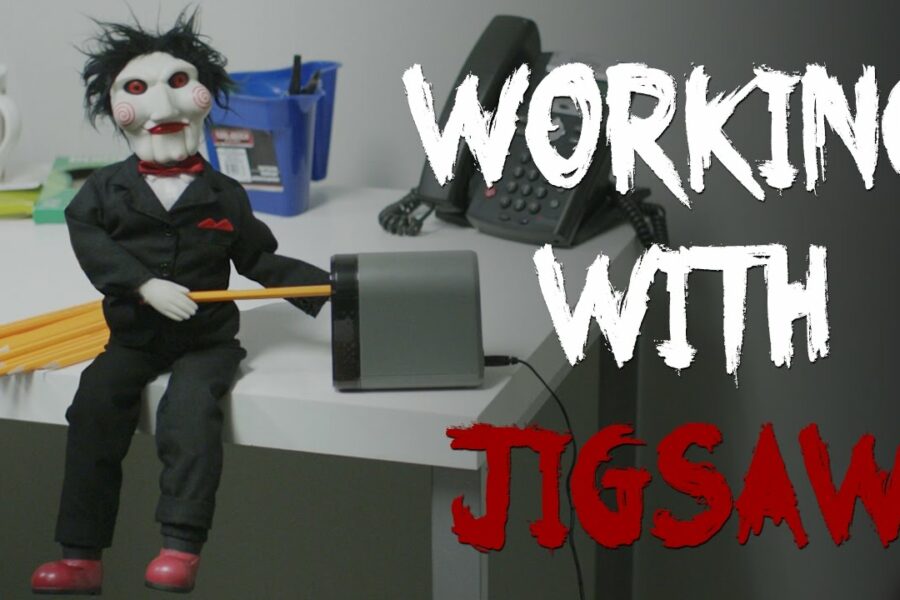Michael Dlugosch works as a Senior Consultant at Kwantic Oy, a Web Analytics startup company in Helsinki/Finland. Follow Michael on Twitter
In Part 1 Michael discussed the sins of Vanity and Envy. In this instalment he goes on to talk about how Digital Project Managers can keep digital projects on budget, and perhaps even add more value than expected for the client and your agency, and what it means to lead from the front as a Digital Project Manager.
3. Gluttony – “We need to increase the project budget by 2 million”
Gone are the days when clients seemed to have endless budgets allocated to an emerging digital medium and where they hoped to mark their claims on the Western frontier.
Today, more and more payments are tied to specific milestones, preliminary approvals by the steering group and successfully conducted functionality tests that are based on the use case descriptions, which may postpone a digital project phase’s payment for six weeks.
It all depends on what kind of organisation you are working in and whether you’re paid by the efforts your team has put in, for meeting certain functionality criteria or for something else judged by some obscure stakeholders somewhere else in the world – big money spends on digital projects have become scarce over the last few years, and you had better be fully aware that there is no more budget for your project – even if the customer has changed the scope countless times at will.
Either way, in these difficult times for the digital industry a Digital Project Manager needs to find ways to keep delivering with reduced budgets and less margin for error that ultimately hit your already financially fragile web agency.
Here are two ways to deal with the constant problem of digital project budget overrun:
- Overspending
- Shadow budgeting
Overspending
This is always a calculated bet on the future. It is the technique whereby a Digital Project Manager or Account Manager justifies digital project overspend by assuming that future projects for the same client will allow them to claw back the project overspend for the current one.
Shadow budgeting
Shadow budgeting is the art of working to lower budgets than you actually have in order to cater for the inevitable overrun – best case is you deliver under budget and achieve some internal process or skills development while being paid, worst case is you deliver on budget – not a bad worst case scenario, I think you’ll agree.
You start by taking the budget which you have for a given project phase or deliverable and you simply reduce this budget by 20% and consider the remaining 80 per cent from now on your available budget for this phase or deliverable.
Your team may mourn, but here’s how you can explain it so that they are more likely to follow your approach…
Most project deliverables follow Pareto’s 80/20 rule – 80% of the outcome of a project deliverable is realised with only 20% of the effort put in. It usually swallows all remaining budget to complete a deliverable – particularly due to long review cycles and more iterations than planned.
Plus, your client may indeed be happy with a preliminary 20% deliverable to collect instant feedback from within their own organisation even before your agency has put in all the efforts in to complete the whole stage.
In the end the client’s organisation may scrap it all anyway because your deliverable may not meet their high expectations – so why not give them sneak previews instead?
My best advice is to involve your team in this from the start! Let your team decide how to share the most laborious tasks. As a Digital Project Manager, get your hands dirty in the practical preparations. Touch code, review copy texts, cut images – simply suck in as many practical issues as you can and familiarise yourself with the strains of fatigue and boring repetitive tasks.
Encourage your team to divide labour, to share what they learn and discover along the way, to focus on tasks which require a lot of concentration only for an hour at a time and to review and question each other’s work.
Allocate half of the shadowed budget for this stage (10%) to scrutinise and streamline the team efforts for getting the original deliverable out with more nifty tools, better material preparation, machine-based data enhancements and a smarter repository structure.
Make it a team effort to elaborate on solutions for the never ending need for further streamlining! Equip every piece of material with hooks and handles so that you can re-process and re-use it along the way.
As plenty of the original budget for phase conclusion is usually spent on implementing what was originally agreed in the first place, you need to free the team from the inability to revoke their original ideas, and because some of these efforts are spent on repetitive tasks, you may be lucky enough to pocket the famous learning curve effect which usually come along with repetitive tasks and may account for as much as 30% of the original 80% phase budget.
Any Euro, Pound, Dollar or Zloty spent on thinking about how to solve a problem can lead to totally new, and unpredicted, ways to get things done, and with considerably less effort and thus more cost effectively for future projects – think long-term.
With the other 10% of your shadowed budget – spend it on thinking through the consequences of the chosen setup. You may find that with only a relatively small additional effort, you can put time into those mythical documentation and show cases!
4. Lust – “Non serviam!”
I can’t help but notice the occasional unwillingness among Digital Project Managers to serve.
By this, I don’t mean the feeling that one would have to stoop when the customer lets the proverbial soap slip – I mean the ability to let your own Digital Project Manager personality evaporate into the background in favour of something else more honourable and geared towards getting things done together for the team.
It is a platitude that any kind of management only has two ways to get anything done – action and communication.
Communication without action is simply pretending, and action without communication will never lead anywhere. Big gestures, speeches, or any other kind of ‘pep talk’ are not really well suited for motivating people’s participation without follow through.
The inability or unwillingness to serve can be easily attributed to what psychologists call: narcism. However, it may lead further to take another angle and approach this topic through the back door.
We have, thanks to the genius of the sociologist Max Weber, a term for coining what might make the essential difference here – it’s called work ethics. At its core it can be surmised as “working hard will please…later”.
The distinction between hard work in the present and a gratification in the future is the core personality attribute that distinguishes an average Digital Project Manager from an excellent Digital Project Manager.
Contrasting this approach with the mentioned distinction between “action” (from Latin “agere” – to do) and “communication” (from Latin “communicare” – to share, to make common) indicates the direction of the reference inherent in both terms – towards oneself vs. towards something beyond oneself.
I believe the trouble with the stated “unwillingness to serve” is the coherence between one’s actual deeds and the expected or well deserved gratification structure behind the deeds. Or from the opposite perspective, it is the inability to classify one’s own deeds into coherence beyond the benefit for oneself.
If a Digital Project Manager is primarily concerned about their own reputation (their lust for praise from others), status or comfort, it will undoubtedly have a negative effect on the team’s motivation to walk the extra mile with them.
Who has ever met a Digital Project Manager that leaves the office during a laborious end phase of a website production on the evening before go-live with the reasoning “I have to attend my dance class”? If you have you have every right to scorn at their own perceived right to call themselves a Manger of any description.
To manage means to lead, and leading is located in the action domain, not in the communication domain.
In Part 3 of the series, Michael discusses how to resist getting angry with clients when the temptation is overwhelming, and how to control the scope of digital projects by defining clear specifications and project scope from the outset – Anger and Covetousness









Leave a Comment